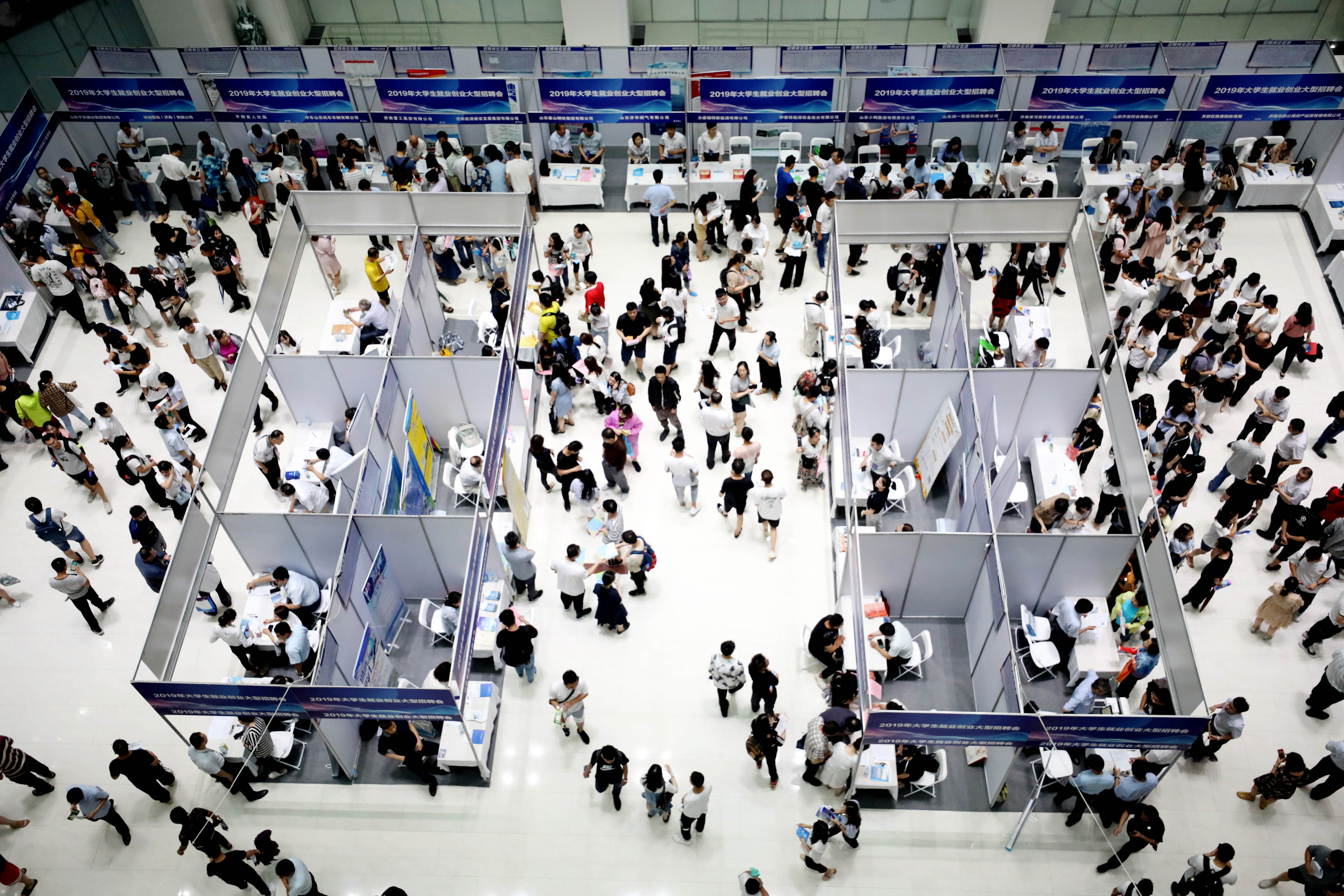BEIJING, July 15 (Xinhua) -- China's economy expanded steadily in the first half of 2019 as ongoing reform and opening-up helped to offset the impact from complex external and domestic economic situations.
The country's GDP logged 6.3-percent growth in the first six months of this year, in line with the government's annual target of 6-6.5 percent, data from the National Bureau of Statistics (NBS) showed Monday.
The economic performance was generally stable and remained within a reasonable range, NBS spokesman Mao Shengyong said, adding that the H1 data had offered a good foundation for the country to realize its annual growth targets.
The 6.3-percent GDP increase, achieved amid slower global economic growth, weak expansion of international trade and domestic downward pressure, meant China was still one of the world's fastest-growing major economies, Mao said.
In the second quarter, the economy rose 6.2 percent from one year earlier, a retreat from 6.4 percent in the first quarter.

Graphics shows data released by the National Bureau of Statistics (NBS) on China's economic development in the first half of 2019. (Xinhua/Xiao Xiao)
INTRINSIC ECONOMIC STRENGTH
Although the headline GDP growth decelerated in Q2, activities rebounded visibly in June, with almost all the growth indicators beating expectations.
Retail sales rose 9.8 percent year on year in June, accelerating from 8.6 percent in May. Industrial output growth accelerated to 6.3 percent from 5 percent in May. Fixed-asset investment climbed 5.8 percent in the first six months, up from 5.6 percent for January-May.
The rebound in June activity growth may partially be driven by the recovery in demand, while the large-scale tax and fee cuts may have helped support industrial profitability and consumption growth in June, CICC analysts wrote in a report.
Consumer inflation and the job market remained stable. The consumer price index rose 2.2 percent in H1, while the surveyed unemployment rate in urban areas stood at 5.1 percent in June, both below the government's annual control targets.

Job seekers attend a job fair aimed at university and college graduates in Jinan, east China's Shandong Province, July 6, 2019. (Photo by Zhao Xiaoming/Xinhua)
Instead of resorting to massive stimulus policies, China, while ensuring economic growth within a reasonable range, has focused on pushing forward reforms and innovation to boost growth, making the 6.3-percent growth more sound and sustainable.
A breakdown of the data showed the output of the service sector, which accounted for 54.9 percent of the total GDP, rose 7 percent in the first half, outpacing a 3-percent increase in the primary industry and a 5.8-percent rise in the secondary industry.
Consumption continued to play a major role in driving economic growth, with final consumption contributing to 60.1 percent of economic expansion in the January-June period. Net exports contributed to 20.7 percent of GDP growth in H1.
In a recognition of the resilience of the Chinese economy, the IMF in April revised the 2019 growth projection for China up to 6.3 percent, 0.1 percentage points higher from its previous estimation.
POLICY SUPPORT
Fully aware of the downside risks, the Chinese government has taken multi-pronged efforts to remove the structural and institutional barriers hampering long-term growth.
In implementing a proactive fiscal policy, the country announced cuts in tax burden and social insurance contribution of businesses by nearly 2 trillion yuan (about 291.12 billion U.S. dollars) in 2019.
In the first five months, newly-introduced tax cuts and fees reductions have saved businesses by around 893 billion yuan.
CICC said the effect of the large-scale tax cuts this year would likely reach its "peak" in Q3 or Q4, supporting corporate profitability and consumption growth.
For targeted financing support of the real economy, China has announced a lower reserve requirement ratio (RRR) in three phases to support private as well as micro and small enterprises, which is expected to unleash a total of 280 billion yuan of liquidity. The third phase of the RRR cut is scheduled to take effect Monday.
The government has also announced measures to improve the business environment, encourage local government special bond issuance and open up more sectors for foreign investment.

A staff member examines vehicles made by FAW-Volkswagen Automobile Co., Ltd. in Changchun, northeast China's Jilin Province, July 9, 2019. (Xinhua/Xu Chang)
"These measures will promote the economic development of both China and the world, making China still a growth engine for the world economy," said Jeffrey Wong, head of the advisory of KPMG China.
Mao Shengyong expected the effects of these policies to be more obvious in H2, and said the government had ample room for policy maneuvers.
Taking boosting investment as an example, Mao said fast urbanization and the government's regulation policies will prevent big swings in property development investment, while accelerating local government special bond issuance and major project approvals will lead to rebounding growth in infrastructure investment.
Lian Ping, chief economist with the Bank of Communications, expected the economy to grow 6.3 percent in 2019.
The country's economic growth may fluctuate with growing external uncertainties, but will not slide out of the annual target range, Lian said. Enditem
(Video reporters: Zhang Qiao, Zhang Shuang; Video editor: Zhu Cong)



